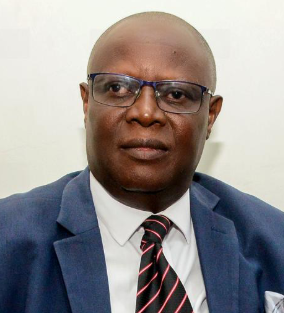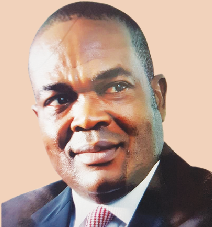Confidence may go a long way when there are no certain answers.
There is a widespread belief that advisors must both act confidently and provide clear-cut answers in order to come across as credible and stay in business. In Thinking, Fast and Slow, famed psychologist Daniel Kahneman argues that experts who acknowledge their ignorance may expect to be replaced because confident advisors are better able to gain the trust of their clients.
Kahneman adds that although “unbiased appreciation of uncertainty is a cornerstone of rationality…it is not what people and organisations want.” Indeed, neuroimaging research shows that uncertainty diminishes our ability to prepare effectively for the future and thus contributes to anxiety.
Such findings resonate with the everyday work experiences of many professional advisors around the world. One of the authors of this article has been told to deliver more precise and certain financial advice in order to be perceived as more confident and thus be preferred by clients. Similarly, MBA students often ask professors not to use probabilities, say “it depends” or use “if-then” constructions. They would rather have a single answer to a problem or a three-step model that they can follow every time. And yet, these examples deal with complex decision-making variables for which it could be dangerous to give very certain advice.
The messenger vs. the message
This leaves advisors with two pertinent questions: “What type of advice should I deliver?” and “How do I deliver it so that I gain an edge over my competitors?” Luckily, a recent research paper by C. Gaertig and J. P. Simmons of the Wharton School provides some answers. Their paper “Do People Inherently Dislike Uncertain Advice?” examined whether people prefer confident to uncertain advisors, and whether the same preference applies to the advice itself.
The paper included 11 studies, whose results were broadly consistent. Unsurprisingly, people did prefer confident to uncertain advisors. However, when faced with an explicit choice, the study participants actually preferred uncertain advice.
These studies disproved the notion that advisors have to provide certain, non-probabilistic advice for it to be heeded or for the advisor to be seen as confident. In fact, it is possible to dissociate confidence from certainty when providing advice. An advisor can confidently deliver uncertain advice, have it well-received and win the client.
When receiving probabilistic (uncertain) advice, the participants viewed higher probabilities (e.g. 73 or 85 percent) more favourably than figures hovering close to 50 percent. According to Gaertig and Simmons, higher probabilities are perceived as more informative and hence more helpful in making predictions.
The researchers warned about extrapolating their findings to all situations. Recruiters or HR professionals, for instance, should note that a manager already sold on a particular candidate may prefer to hear that this person is “definitely” the best for the job, rather than “probably” the best. Their final advice? Communicate with confidence, but do not communicate false certainty.
The pratfall effect
In 1966, Aronson, Willerman and Floyd described how making an embarrassing mistake influenced an individual’s likeability. As it turns out, it largely depends on the perceived level of competence of the person. While a highly competent advisor becomes more likable after committing a blunder or pratfall, the opposite is likely if the advisor is perceived to be average. (In the original study, two quiz show participants – one awesome, one mediocre – were overheard spilling their cup of coffee.)
If an advisor is already well regarded, a blunder outside of her area of expertise may make her more likeable. However, if the blunder is in her realm, her likeability and credibility may suffer. Hence, when giving uncertain advice, it is important to let your client appreciate that you understood the complexity of the situation and used your expertise appropriately to come up with good, legitimate advice. That said, showing your vulnerability in other areas may increase your likeability.
Reducing resistance to advice
Looking through a different lens, Loschelder, Friese, Schaerer and Galinsky found that price precision in negotiations was appreciated by both amateurs and professionals, but only to an extent. When an opening offer was on the far end of the precision scale, professionals – who understand the complexities of reality and dwell on decisions with multiple variables and probabilities – concluded that their counterpart was incompetent. Similarly, advisors who attempt to deliver overly precise advice to professionals are more likely to see their advice dismissed or challenged. However, when the advice is presented with solid legitimacy, the tolerance and appreciation for its precision (or certainty) goes up.
In Give and Take, Wharton Professor Adam Grant argues that a negotiator is more credible and persuasive if she does not present arguments with absolute certainty, a concept he calls “powerless communication”. In a negotiation, if the counterparty attempts to impose its views on the other, resistance becomes more likely. Conversely, when negotiators use more tentative (or uncertain) arguments, they signal their openness to different points of view, which can lower resistance and increase persuasion.
Compared with advisory work, negotiations carry a competitive tension, which may reduce even further the counterparty’s tolerance for excessive price precision, overt and positional advocacy and thus definite advice.
Horacio Falcão is a Senior Affiliate Professor of Decision Sciences at INSEAD. He is also the programme director of Negotiation Dynamics, part of the school’s suite of Executive Development Programmes. He is the author of Value Negotiation: How to Finally Get the Win-Win Right.
Alena Komaromi (INSEAD MBA ’12D) is a financial services professional.








